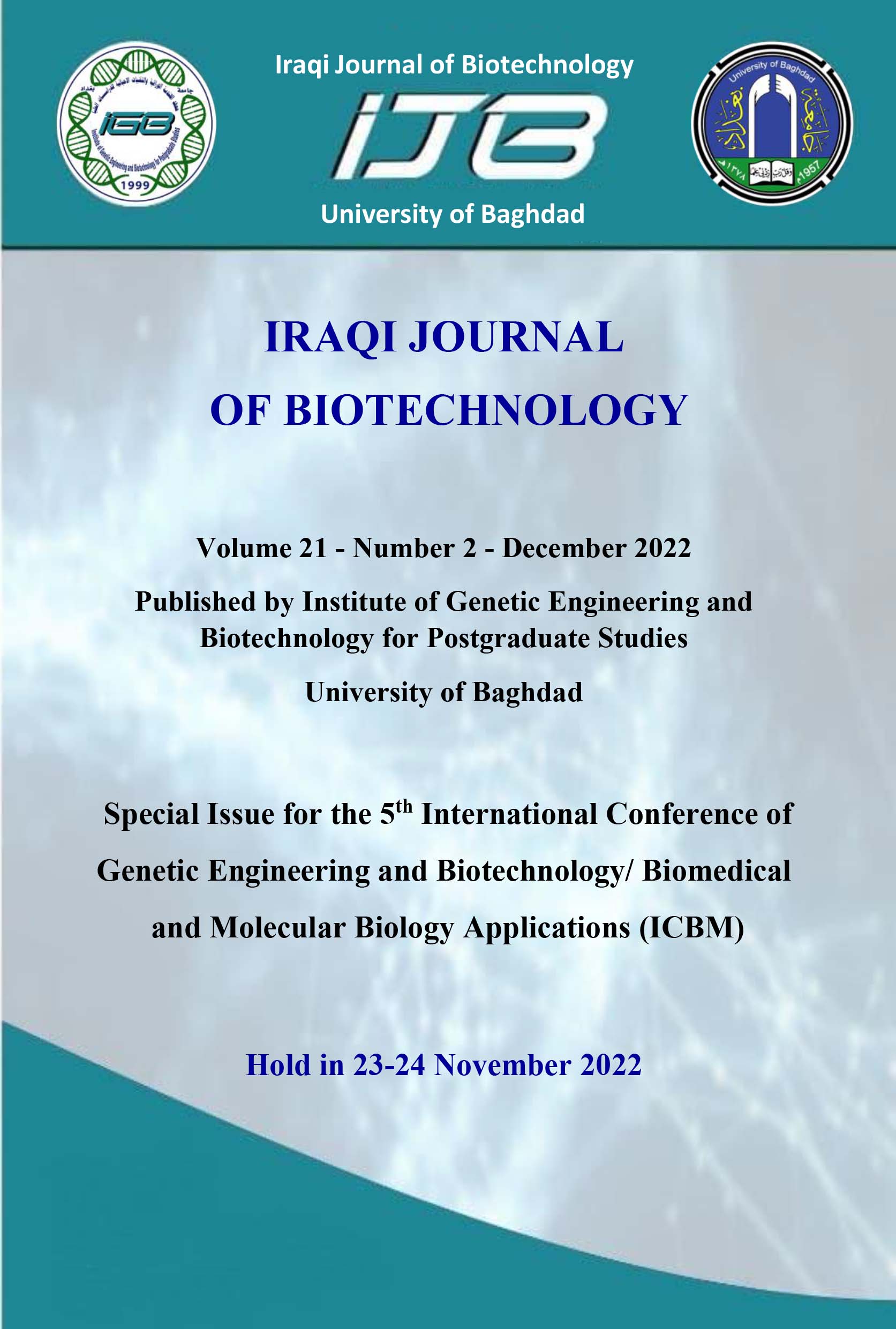Prevalence and Antibiotic Susceptibility Pattern of Aerobic Bacteria Isolated from Iraqi Bed Sores Patients Admitted to Intensive Care Units
Abstract
Bed sores (BSs), are injuries caused by ischaemia on the skin, adjacent tissues, and bones as a result of prolonged compression or shear forces.The National Pressure Ulcer Advisory Panel's (NPUAP) classification of pressure ulcer severity is one of the most widely accepted . The current study was determining prevalence and antimicrobial susceptibility pattern of aerobic bacteria that causes the BSs infection in Iraqi patients. Atotal of 82 BSs swabs specimens were collected from patients with bedsores infection due to prolonged bed lying in intensive care units (ICUs) from various hospitals in Iraq (AL-Yarmouk Teaching Hospital and and IBN –ALQUFF Hospital) during the period from October 2021 to February 2022, 43 men and 39 women, Samples were cultured on selective, enrichment, and special media and then incubated at 37 °C for 18-24 hours. Bacterial isolates were identified using various culture media, microscopic examination with Gram stain, antimicrobial susceptibility testing was performed using Viteck-2 system and Kirby- Bauer disk diffusion method according to Clinical and Laboratory Standards Institute guidelines (CLSI) 2020. The prevalence of bedsores in hospitalized patients was 70/82 (85.4.7%) Both Gram positive cocci and Gram negative bacilli were isolated from 82 patients ;Among the Gram negative isolates, Pseudomonas aeruginosa had the highest frequency 21/40 (52.5%), followed by Acinobacter baumanii 4/40 (10%), E.coli 4/40(10%), Klebsiella pneumoniae3/40(7.5%), Proteus mirabilis 3/40(7.5%), Pantoae spp 2/40 (5%), Aeromonas verronii1/40(2.5%), Kluyvera intermidia1/40(2.5%) and Sphingobacter thalophilum1/40(2.5%). The gram positive cocci isolated was Staphylococcus aureus, s.epidermis, Enterococcus faecalis, Kocuria Kristina. The distribution of bedsores among the ages of the patients showed that age group within the range of >40 years recorded the highest incidence of bedsore infection. The most common site of bedsores was sacral region 34/70 (48.57%) followed by leg 11/70 (15.71%). All isolated S. aureus showed 94% resistance to Penicillin but showed variable susceptibility to other antibacterial used. P. aeruginosa was resistant to penicillin (100%) followed by Doxycycline (100%), amoxicillin-clavuanate, trimethoprime (90%). The results showed that all isolated bacteria considered multi-drug resistance organism (MDROs) of 67/70 (95.7%) except few strains of P. aeruginosa 2/21 (9.5%) and S.aureus 1/17 (5.8%).


